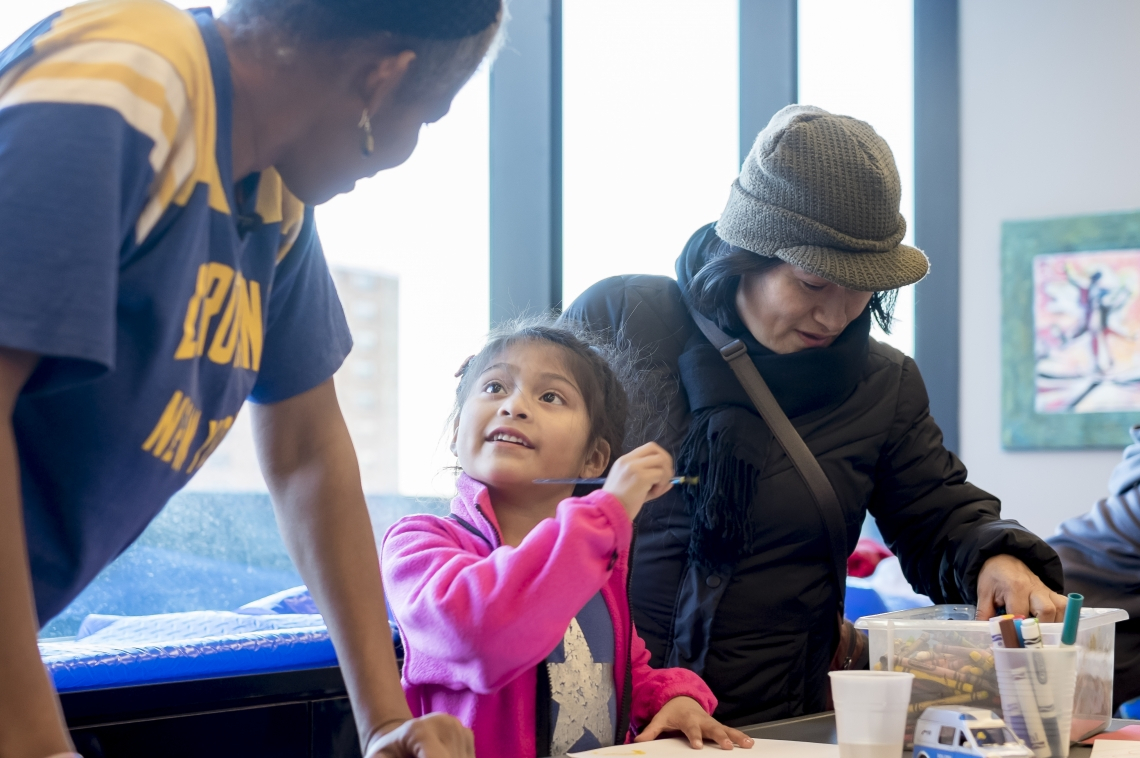
Those who have been following ArtPlace’s progress closely know that we talk about our work as investing in arts-based strategies to help achieve place-based outcomes to reposition arts and culture as a core sector of community planning and development. In order to make sure that we are covering the entire field of community planning and development, we have identified ten sectors that generally cover that terrain.
At our annual Grantee Summit that we hosted in Philadelphia in May, we organized our breakout sessions around these ten sectors, featuring our grantees working in those areas in conversation with an expert from the field. This post is the tenth and final in the ten-part series continuing those conversations, and it focuses on Education & Youth.
Below is a summary of a conversation between Susan Delvalle from the Sugar Hill Children’s Museum of Art & Storytelling, and Lynn Rippy from YouthBuild and IDEAS 40203.
As the great philosopher Whitney Houston said “I believe the children are our future. Teach them well and let them lead the way.” Which is a cheeky way to start this blog post, but yet a quite accurate lead-in to the conversation below.
Perhaps it would be even more accurate if Whitney had brought in the arts into her melody, or as Lynn Rippy says: “Young people have the answers to the problems that we see in the world and their abilities to express themselves creatively to answer those problems is probably the number one way to change our world.”
Through her work with YouthBuild Louisville, IDEAS 40203 and Creative Innovation Zone, Lynn and her organizations leverage the arts (in this case crafts and trade) as an integral part of fortifying and enriching the role of the youth geared education. This is particularly visible in YouthBuild’s work in the Smoketown Hope VI community, where there is not only a workforce connection for youth in the build out, but they also “work with the community to understand what they want for our youth” and the integration of education as a part of that community’s backbone.
As Lynn explains: “It’s important to use arts as a conduit to improve educational outcomes, to improve connections to the neighborhood, connections to their school, and in the end to remove any isolation between young people and the community.”
Similarly, the Sugar Hill Children’s Museum of Art & Storytelling has also seen the value of Education, Youth and the Arts in enriching a community.
As one component of Broadway Housing Communities’ Sugar Hill Project, which combines housing for the formerly homeless, a children’s museum, and a preschool, the Sugar Hill Children’s Museum offers an entirely new cultural resource for the surrounding neighborhoods. It aims to strengthen the growth and development of young children in the community through its programs in art, storytelling and education. “Housing, Education and Art…people don’t often think of that combination as contributing to the health of their community,” says Suzy Delvalle of the Sugar Hill Children’s Museum.
Incorporating a museum into the Sugar Hill Project was a very deliberate choice stemming from Broadway Housing Communities’ 30+ years of work to address poverty and homelessness in Upper Manhattan. A cultural facility was included in the project specifically because of the impact of creativity on cognitive thought and developmental skills: “We thought long and hard about the quality of the program. A lot of children’s museum are concentrated on play, which is great, but we want more rigor in our approach to creating programs that encourage children to learn. This is at the heart of our work.”
As with YouthBuild’s work, the arts are a pathway to education: “Having relevant works of art in the galleries is a great way of encouraging conversation and thought. It inspires children to express themselves and to understand their place in their community and the world.” In essence the Museum’s educational programs encourage people (whether they be children or adults) to author and share their own stories. “We use all forms of art and storytelling as a platform for learning.”
Both YouthBuild and Sugar Hill speak about the role of the arts in building confidence in the young people they work with and the ripple effect of this increased confidence in the community. Lynn says that “through creativity all kinds of confidence is built including young people’s ability to change the world and improve their own personal outcomes in life.” Adding to this thought, is Susan, who says “arts allows you to think broader in a situation or problem, it is a facilitator for youth to go out and communicate with their community.”
Lynn adds, “When a young person is able to master a craft while learning a math or science concept, they turn that into action and bring that action into their community,” and it is in that action that we can see the value and importance the arts brings into education and health of a community.
In what ways have you seen the arts and education working in tandem towards effective community change? Are there other ways the arts can be used to engage the youth in a community? As always we’d love to hear your thoughts!





